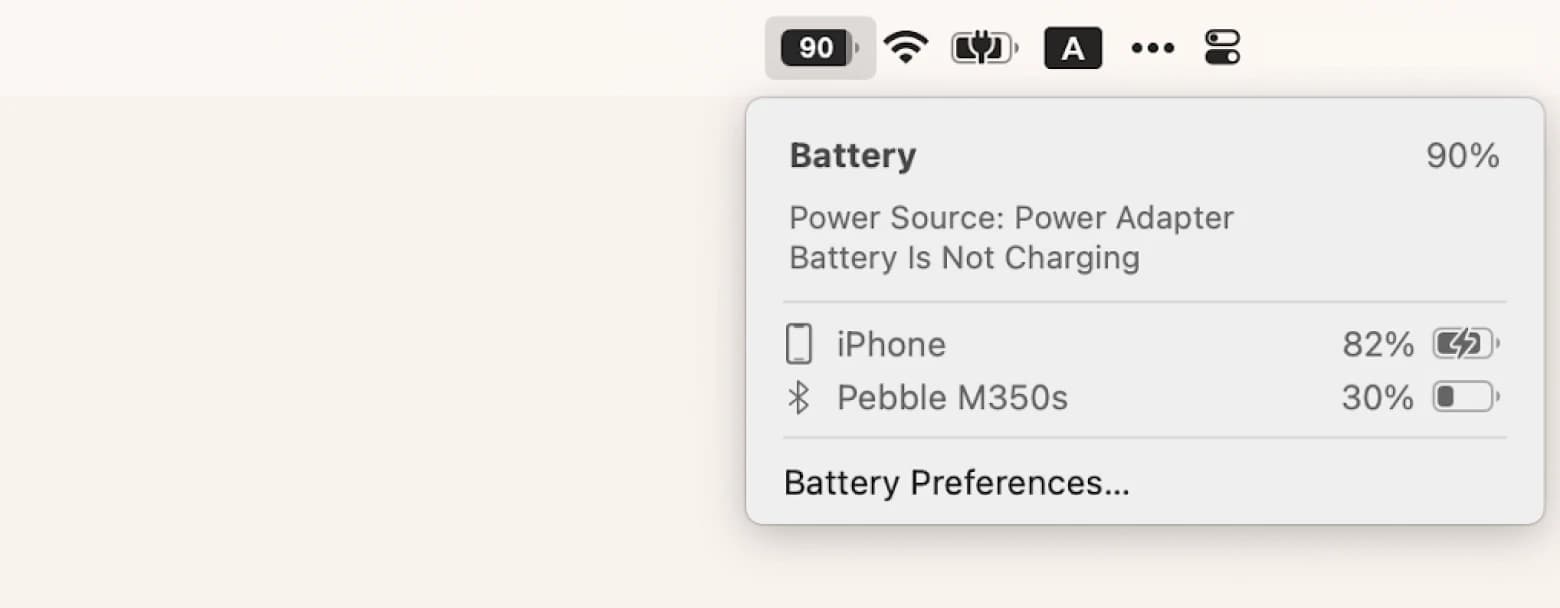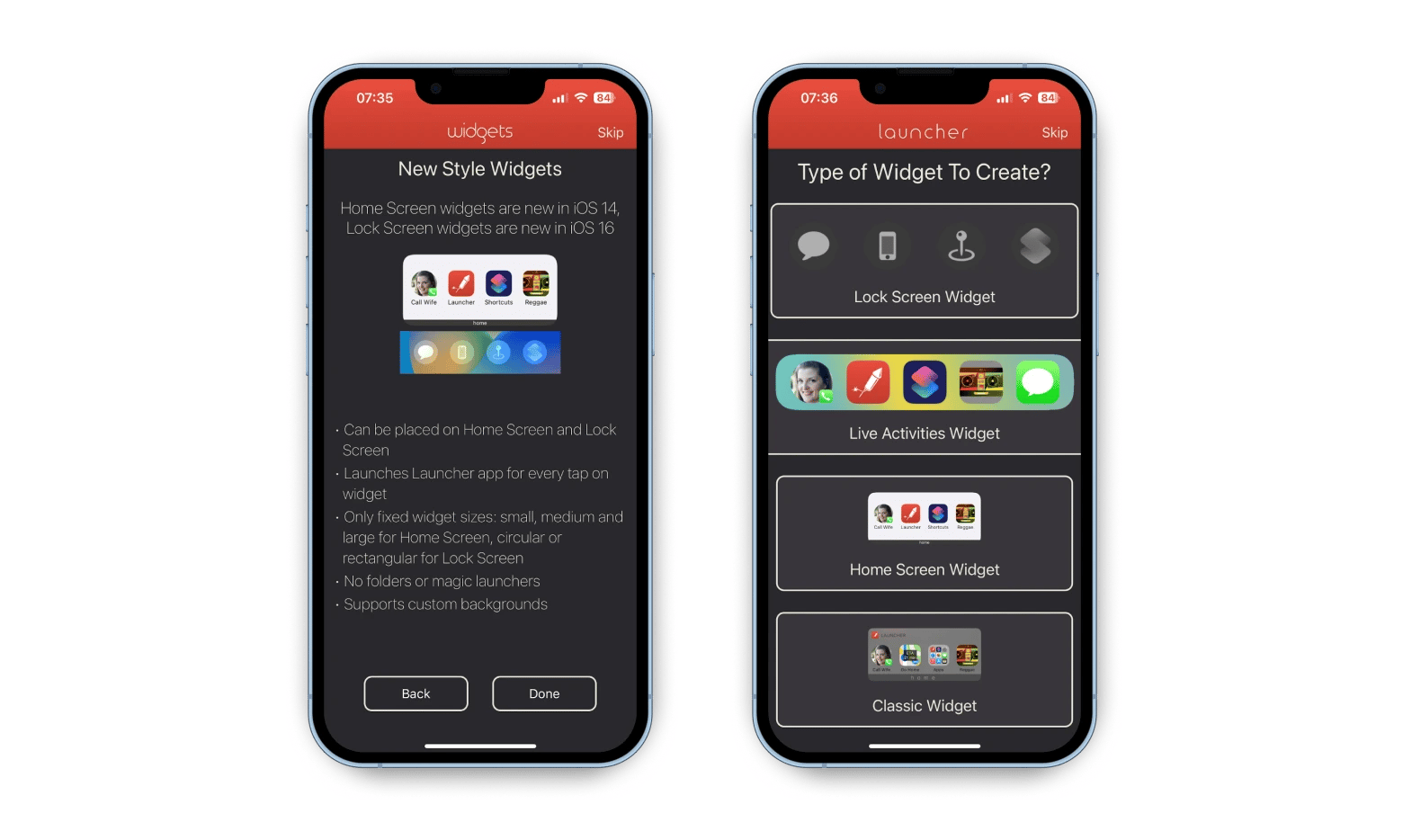How to fix an iPhone that won't charge: 11 options
- Check for obvious hardware issues first.
Inspect your iPhone, adapter, and cable for burns, acrid smells, or damage. Stop charging immediately if you notice any physical harm and send your phone for repair. - Test your charger and clean the charging port.
Swap out your charging cable and adapter with working ones. If the problem persists, check the port for dirt and gently clean it with an alcohol-dipped cotton swab. - Restart, hard reset, or update your iPhone.
Software bugs can interfere with charging. Restart or perform a hard reset, and make sure your iOS is up to date via Settings > General > Software Update. - Control temperature and charging habits.
Avoid using your iPhone while charging and keep it in ambient temperature (32º–95º F). Overheating or extreme cold can prevent charging. - Use smart tools to monitor battery and optimize charging.
Apps like Batteries and AirBuddy (available on Setapp) let you track your iPhone’s battery status from your Mac. Use Launcher to quickly toggle Optimized Battery Charging for full charges when needed. All three apps — and over 250 more premium tools for Mac and iOS — are available in a single Setapp subscription with a free 7-day trial.
Don’t panic if your iPhone won’t charge. Sometimes, you can get your iPhone to charge again with simple hacks. In this guide, I’m sharing tips I’ve tried or find useful.
I’ll start with a quick overview. For more details, scroll down.
| Trouble spots | Repair recipes |
|---|---|
| Physical damage (burnt spots or acrid smell present) | Cease charging, send for repair. |
| Faulty cable or adapter | Test with another charger; replace if faulty. |
| Dirt in charging port | Clean with alcohol-dipped cotton swab. |
| App conflicts | Restart or hard reset iPhone. |
| Outdated iOS | Update iOS to latest version. Monitor iPhone’s charging status from Mac with Batteries. |
| Overheated iPhone | Cool down to ambient temperature. |
| Using iPhone while charging | Stop usage during charging. |
| Wireless charging not working | Use a Qi-certified charger. Try AirBuddy to check your iPhone’s battery level on Mac. |
| iPhone only charges up to 80% | Disable Optimized Battery Charging. Quickly access battery settings with Launcher. |
| Liquid damage | Let dry, avoid charging until dry. |
| “Accessory not supported” error | Clean the lightning port; ensure accessories are compatible. |
Why is my iPhone not charging or charging slowly?
The problem can be due to several reasons.
- Dirt clogging the charging port
- Faulty cable, adapter, or the iPhone’s charging circuit.
- Outdated iOS
- An overheated iPhone
- Liquid damage shorting some of the internal circuits
You can’t be completely sure of what causes your iPhone to stop charging. Not unless you get it inspected by qualified technicians. Then again, you don’t need a thorough investigation to attempt the solutions below.
How to fix iPhone charging problems
If your iPhone will not charge, try these methods.
1. Look for signs of physical damage
If you notice burnt spots or an acrid smell emanating from your iPhone, power it off immediately. Don’t try charging it. Otherwise, you might cause irreparable damage. Rather, it’s better to send your iPhone to the nearest Apple Support center. There is nothing you can do if the phone’s hardware has failed.
2. Check the power adapter, charging cable, and power source
If you use a generic adapter, there’s a risk that it will fail after several charges. Even if you’re using an original adapter, you can’t rule out such possibilities. But how to check if the adapter is functional?
Remove the charging cable from the adapter and plug it into a working charging source. Still not charging? Maybe you need to try a different cable, because this one is broken.
Personally, I’ve broken the joint between the cable and the connector internally. Blame it on for being rough when unplugging the cable. So, you’ll want to make sure you didn’t unknowingly damage the cable.
3. Check the charging port
The next thing to check is the charging port itself if your iPhone is not charging when plugged in.
- Go to a brightly lit area. Take a peek inside the charging port.
- Check for dust, grime, lint, or dirt covering the charging pins.
- Then, dab a cotton swab with alcohol and gently clean the lightning port.
Try charging your iPhone again.
4. Restart your iPhone
Your device might refuse to charge because of some app conflicts. If that’s the case, resetting the iPhone will resolve the issue. To do that,
- Press and hold the power and volume buttons. Release when you see the “Slide to Power Off” prompt.
- Turn off your phone by swiping the slider to the left.
- Wait for several seconds.
- Press the power button to turn on your iPhone again.
Sometimes, a simple reboot is all you need.
5. Perform a hard reset (force restart)
A hard reset is different from merely turning the iPhone on and off again. It restarts the phone’s processor and may solve minor issues like slow or failed charging. Like restarting your iPhone, you need to go through a series of steps for a hard reset.
Try these if you’re using an iPhone 8 or later model (up to iPhone 17).
- Press the iPhone's volume up button and quickly release it.
- Repeat for the volume down button.
- Press and hold the power button until you see the Apple logo.
- Release the power button.
Plug in the charger and see if your iPhone charges.
If you’re using an iPhone 7 or an older model, the steps for resetting the device slightly vary (see all iPhone releases in order to find your model). Check out this guide on how to reset the iPhone.
6. Update iOS
Sometimes, an outdated iOS is the reason your iPhone stops charging. Installing new apps that are incompatible with the existing iOS may disrupt the phone’s charging function. To prevent such software glitches, update to the latest version of iOS.
- Open Settings on your iPhone.
- Tap General > Software Update.
- Turn on Automatic Updates if it’s not.
- Then, ensure that Download iOS Updates and Install iOS Updates are enabled.
Your iPhone will now download and install any pending updates. Once completed, restart the phone and see if it’s charging. If you’ve installed the Batteries app on your Mac, you’ll know straight away. Batteries let you monitor all connected Apple devices and display their charging status from your Mac’s menu.

7. Ensure your iPhone is not overheating or frozen
Electronics behave erratically when they operate in extreme temperatures. That’s what I learned as an electronics engineer. So, if your iPhone is overheating or you’re using the phone in extreme winter, the charging module might fail. But fear not. The problem is seldom permanent.
You can try placing your iPhone in ambient temperature (32º–95º F ) and waiting for a while. As its temperature returns to normal, which it should, your phone can be charged again. However, if your iPhone remains overheated, there is likely a much more serious problem, such as a short circuit. If that’s the case, I suggest sending your iPhone for repair.
8. Don’t use your iPhone while charging
The reason behind this tip is simple. If you use your phone while charging, most of the electric current is channeled to support the additional resources. So, your iPhone’s battery will charge more slowly and might also overheat, especially if you run processor-intensive apps like MMORPG games.
9. Try charging wirelessly
If your iPhone is plugged in but not charging, you can try charging it wirelessly. This only works for iPhone 8 and later. And you need a Qi-certified charger from Apple. To charge your iPhone wirelessly, follow these steps.
- Connect the wireless charger to a power socket.
- Place your iPhone on top of the charger with the screen facing up.
- Power up the wireless charger.
You’ll know if your phone is charging from the lightning sign on the battery icon. Alternatively, use AirBuddy to check your iPhone’s battery level. The app displays your iPhone’s battery status, along with other wireless devices, with a simple click from your Mac.

10. Turn off the Optimized Battery Charging feature
Another problem that puzzles Apple users is when the iPhone only charges up to 80%. Thankfully, this isn’t a hardware issue.
Rather, it’s a feature you’ll find in your phone for prolonging the battery’s lifespan. Technically, if you keep charging a phone’s battery to the max, its lifespan decreases quicker, and Apple wants to prevent that.
However, you might need a fully charged iPhone at times. Let’s say you want to spend the next day hiking. A 100% charged battery gives you an additional several hours of usage, which feels like an eternity in the wild. I personally prefer that, because of the longer hours of usage. But that’s not possible unless you turn off the iPhone’s Optimized Battery Charging mode.
Here’s how on an iPhone 15, 16, or 17:
- Go to Settings > Battery.
- Tap Battery Health & Charging > Charging Optimisation.
- Choose None in the option.
If you use an iPhone 14 or an older model, follow these troubleshooting steps:
- Open Settings > Battery.
- Tap Battery Health & Charging.
- Toggle off Optimised Battery Charging.
Now, your iPhone will charge to 100%. Remember to revert to optimized charging later to prolong your battery’s life. If you find accessing the battery settings repeatedly cumbersome, try Launcher with Multiple Widgets.
With Launcher, you can add Settings as a widget shortcut on your iPhone’s Lock Screen, Home Screen, and Today View.
- Download and open the Launcher app.
- Choose the type of widget and tap Add New.
- Key in and save the widget name.
- Tap App Launcher.
- From the app list, scroll and select Settings.
- Exit Launcher.
Now, you can easily access Settings and set the Optimized Battery Charging mode.

11. Be careful of liquid damage
Sometimes, an iPhone won’t charge because of liquid damage. Once, I dropped mine into the pool, but I quickly fished it out. I was thankful that my phone survived, but some functions, including charging, failed for several days. If you face similar situations, the best thing to do is to let your iPhone dry out.
Turn it off to prevent further damage to your phone, and shake off any liquid that may be trapped internally. Wait for 1–2 days and power it up again. Then, try charging it. If your iPhone doesn’t suffer any permanent damage, it should charge as usual.
My iPhone won’t charge: Summarizing the options for fixing charging issues
Unless you’ve severely damaged your iPhone, you should be able to charge it with one of the methods I share. Often, the cause is trivial, such as a broken charging accessory, like a cable or adapter. You can use Batteries, AirBuddy, and Launcher to speed up your efforts in getting your iPhone’s charging function working again. Batteries and AirBuddy let you monitor your iPhone’s battery status on your Mac. Meanwhile, Launcher with Multiple Widgets lets you place shortcuts to Settings so you can easily configure how your iPhone optimizes battery charging.
All the apps I mentioned are available on Setapp. You can try them, along with dozens of productivity apps for macOS and iOS, for 7 days without cost.
FAQ
How to know if my iPhone's charging port is broken?
It might be damaged if it’s still not working after you’ve replaced the charging cable and adapter. Other signs are overheating inconsistent charging, and broken pins.
How do I force my iPhone to start charging?
To force your iPhone to start charging, first perform a hard reset by pressing and releasing the volume up button, then the volume down button, and finally holding the power button until you see the Apple logo (for iPhone 8 and later). After the reset, clean the charging port with an alcohol-dipped cotton swab to remove any debris. Try a different charging cable and adapter to rule out hardware issues. If your iPhone still won't charge, let it cool down to room temperature if it's overheated, then attempt charging again while the device is powered off.
Why is my iPhone not charging when plugged in?
Hardware damage, app glitches, and broken adapter are some reasons that your iPhone won’t charge. To rule out some of the causes, you can try charging your iPhone wirelessly.
Why my iPhone does not fully charge overnight?
With the Optimized Battery Charging feature turned on, your iPhone will only charge to 80%. Another possibility is that your phone’s internal charging circuit or battery has failed.
What does "Emergency Override" mean?
Emergency Override lets you continue charging your iPhone despite the risks of liquid damage. Your iPhone might temporarily cut off the charging connection when it detects the presence of liquid at the charging port. But you to resume charging by selecting Emergency Override.
How to fix "Accessory not supported or certified" error on iPhone?
You get the error for several reasons, including a dirty charging port or damaged adapter. To fix,
- Replace the charging cable.
- Clean the charging port.
- Use an Apple charger.
- Update iOS and restart your iPhone.
If these don’t work, reach out to Apple Support.






